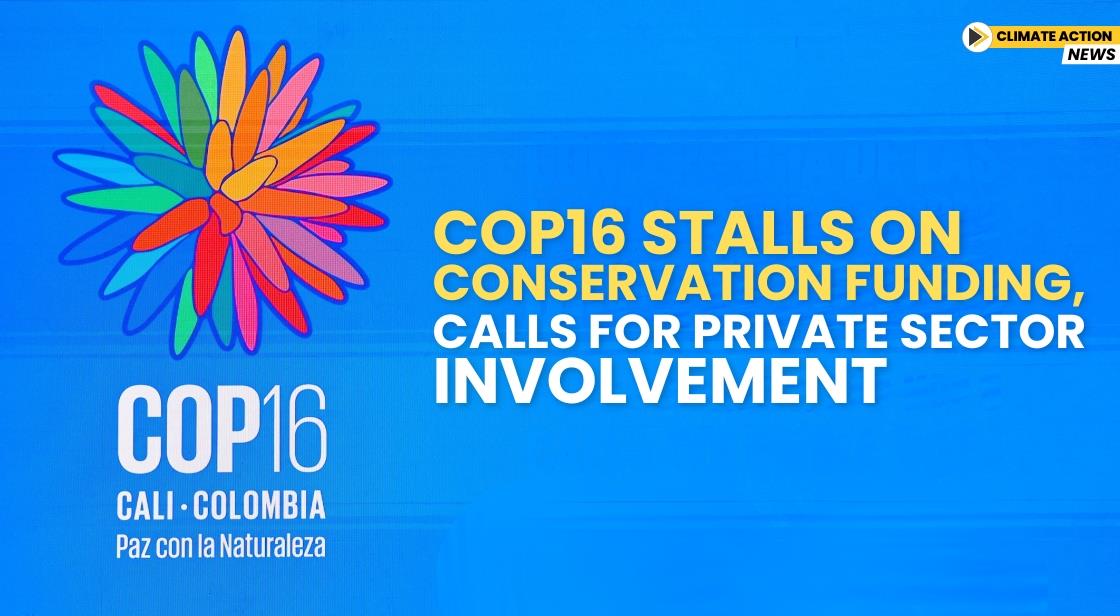COP16 Stalls on Conservation Funding, Calls for Private Sector Involvement

News Synopsis
Introduction: At the U.N. COP16 biodiversity summit in Cali, Colombia, wealthy nations signaled that public funding for global conservation may be reaching its limit, pushing negotiations towards private financing to address the biodiversity crisis. The stalled discussions came as countries struggled to mobilize the $200 billion needed annually by 2030 to halt biodiversity loss.
The failure to meet the ambitious conservation funding goals of the Kunming-Montreal Global Biodiversity Framework has raised concerns over the future of global biodiversity preservation.
While no consensus was reached, delegates agreed on a key mechanism targeting private sector contributions, particularly through charges on companies in sectors like pharmaceuticals that utilize genetic resources in product development. With public contributions to the Global Biodiversity Framework Fund trailing well behind targets, attention is turning to innovative financing from the private sector to bridge the funding gap.
Challenges in Achieving Global Biodiversity Goals
Despite the commitment to secure $200 billion annually by 2030, the COP16 negotiations revealed significant obstacles in mobilizing these funds. This target includes a specific pledge from wealthier nations to provide $30 billion annually. However, after days of talks, agreement eluded negotiators, and the summit ended without a final decision. As representatives departed the summit, it was clear that the ambitious funding goal would require substantial private investment to materialize.
Limited Public Funding for Biodiversity Conservation
Developed nations have struggled to meet the funding targets outlined in previous biodiversity agreements. The U.N. Secretary-General Antonio Guterres made an urgent plea for additional contributions to the Global Biodiversity Framework Fund, but responses from COP16 participants remained modest. Countries pledged only $163 million at COP16, barely increasing total contributions to $400 million, far from the $30 billion annual commitment.
Government foreign aid for conservation has also declined. European nations like Germany and the Netherlands have scaled back their foreign aid budgets, and countries such as France and the United Kingdom have similarly reduced overseas funding.
According to the Organisation for Economic Co-operation and Development (OECD), conservation-specific aid fell from $4.6 billion in 2015 to $3.8 billion in 2022.
Florika Fink-Hooijer, the European Union’s director general of environment, emphasized that public funding alone would no longer be sufficient. "The public money is already leveraged as much as we can," she stated. "We now have to look at other sources of funding."
Redirecting Focus to Private Capital
Acknowledging these constraints, COP16 delegates looked to private capital to fill the funding shortfall. The summit agreed to establish a payment plan for companies that leverage genetic resources in their research, such as pharmaceutical and biotechnology firms. This plan, expected to generate $1 billion annually, will require companies to pay for genetic data obtained from biodiversity, a critical resource for developing commercial products.
However, the $1 billion annual projection falls far short of the billions needed to effectively protect ecosystems such as the Amazon rainforest and coral reefs. Delegates highlighted the necessity of other private funding mechanisms to close this gap.
Innovative Financing Mechanisms for Conservation
To attract private investment, experts at the summit discussed alternative financial instruments such as green bonds and debt-for-nature swaps. Green bonds have gained popularity as a tool for raising funds dedicated to environmental projects, while debt-for-nature swaps enable countries to refinance national debt at reduced interest rates and allocate the savings to conservation.
The World Economic Forum estimates that debt-for-nature swaps could generate up to $100 billion in funding for conservation efforts, offering a promising solution to the biodiversity crisis.
Marcos Neto, director of global policy at the U.N. Development Program, stressed the need for innovative approaches, stating that "the world will need to devise ways for enticing private investment in nature-friendly projects." Such mechanisms are viewed as essential for securing the funds needed to slow the collapse of vital ecosystems worldwide.
Conclusion
The COP16 summit highlighted both the urgency of global biodiversity conservation and the financial limitations of traditional public funding. As wealthy nations confront budget constraints, private investment is emerging as a critical component of conservation funding strategies. By leveraging mechanisms such as the genetic data payment plan and exploring innovative financing tools, the summit set the stage for future collaboration between the public and private sectors to address the planet's biodiversity challenges.
Without significant funding commitments from both public and private sources, achieving the goals of the Kunming-Montreal Global Biodiversity Framework remains a formidable challenge.
You May Like









